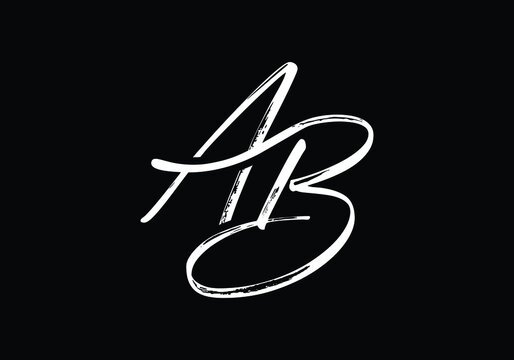Unlocking the Investor Vault: Lessons from Industry Experts 003 and 004
Key Lessons from Investor 003: extracted from meeting notes
IP Strategy Alignment: Ensure your intellectual property (IP) strategy is in line with your institution's goals for your technology. Broad and deep coverage is only beneficial if it aligns with the commercialization interests of all parties involved.
Building a Founding Team: Venture Capitalists (VCs) will scrutinize your ability to assemble a motivated and capable team that can effectively deliver your technology.
Forming Partnerships: Secure design partners early on and offer them early access to the technology. This is crucial for rapid advancement.
Securing Funding: Consider applying for an R&D Catalyst grant as a precursor to more significant investment. Incorporate as a Contract Research Organization (CRO) to potentially qualify for Innovate UK funds and foster commercial partnerships.
Scalable Business Models: Investors look for scalability due to limited funds in the diagnostics system, allowing targeting of various markets. For a pharma-focused model, consider revitalizing old IP for drug development.
Understanding Stakeholders: Recognize the needs of all stakeholders, including clinicians who seek simplicity, the NHS's cost-cutting goals, and the necessity to facilitate technology adoption.
Diagnostics Approach: Distinguish between companion and complementary diagnostics. Companion diagnostics are essential for the safe and effective use of therapeutics, while complementary diagnostics may improve the benefit/risk ratio without restricting drug access. Getting your product into patient stratification for Stage III trials is hard. Tests must be robust and extremely well validated.
Outsourcing Strategy: When considering outsourcing, identify which diagnostic centers could become your partners.
Financial Risk Management: Be aware of the financial risks and ensure you have enough funding to reach the next milestone in your development pathway.
Key Lessons from Investor 004: extracted from meeting notes
Deal Structure: Aim for full ownership of IP or consider a low royalty license. An institute equity split of 10-20% is reasonable, with the potential for founders to end up with 25-30% after negotiations over rounds of funding.
Equity and Options: Remember that the initial 10% in pool options can be a lever for renegotiating 2% back to the founder in subsequent funding rounds.
Leadership Composition: Having a postdoc as CEO is viable, provided they are supported by a strong board of directors.
Market and Scalability: Understand not just the market but the addressable market, considering factors like scalability, for instance, the accessibility of unfixed tissue in smaller hospitals.
Pharma vs Clinical Diagnostic Solutions: Weigh the feasibility of pharma solutions against clinical diagnostic solutions, noting that VCs tend to shy away from diagnostics products until they’re nearly market ready. Pharma solutions may be more feasible but clinical diagnostics might present a larger market.
Service Model Viability: Service models may not seem scalable and thus less attractive to investors. Market size and exit strategy are paramount for investors.
Starting as a Service Model: If considering starting as a service model, evaluate the necessity of VC funding versus growing organically through grants and small contracts.
Protecting IP: Build strong, protectable IP and ensure freedom to operate. F2O searches are expensive and usually conducted by investors during due diligence, but staying informed about the competitive landscape is crucial.
Networking and Contacts: Connect with entities such as Illumina Ventures and Deep Science Ventures, which could be valuable for support and insights. Take advantage of your local opportunities like the events planned by the Crick Science Entrepreneur Network.
ChatGPT’s witty reflection on my raw meeting notes:
Embarking on a dual-duel with the guardians of venture wisdom, I juggled the hats of a student, strategist, and stealthy founder. In the morning, with Expert 003 (names cloaked in mystery to protect the wise), it was like playing chess with IP—every move calibrated, every strategy echoing with the hushed tones of commercial conquest. We talked founding teams, the kind of teams that would make the Avengers pause for thought, and partnerships that offer early tech peeks like golden tickets in a Willy Wonka bar.
As the sun arched, the afternoon with Expert 004 felt like swapping my chessboard for a high-stakes poker game. Here we delved into the pot, pondering the chips of full IP ownership against the ante of equity splits. The talk turned to markets, scalability, and the alchemical transformation of a postdoc into a CEO—proof that sometimes the lab coat might just hide a business mogul.
By the time twilight beckoned, my mind buzzed with the thrill of service models versus clinical diagnostics, and the realization that in this high-octane biotech casino, the house—aka the investors—always eyes the exit. Oh, and let’s not forget the cheeky reveal of my role in the Crick Science Entrepreneur Network, a twist in the plot for my unsuspecting investor friend who so candidly steered me toward them.
As I bid adieu to both maestros, my notebook was richer, my entrepreneurial spirit fiercer, and my network just a hint more illustrious. All in a day's work for a biotech entrepreneur sailing the stormy yet exhilarating seas of innovation and investment."
Disclaimers:
* My personal notes should be largely correct, though I'm only human!
** Beware, ChatGPT fabricates quotes… clearly not human.
Join the dialogue—reflect, share your tales from the trenches, and by all means correct me if you spot any erroneous information.

